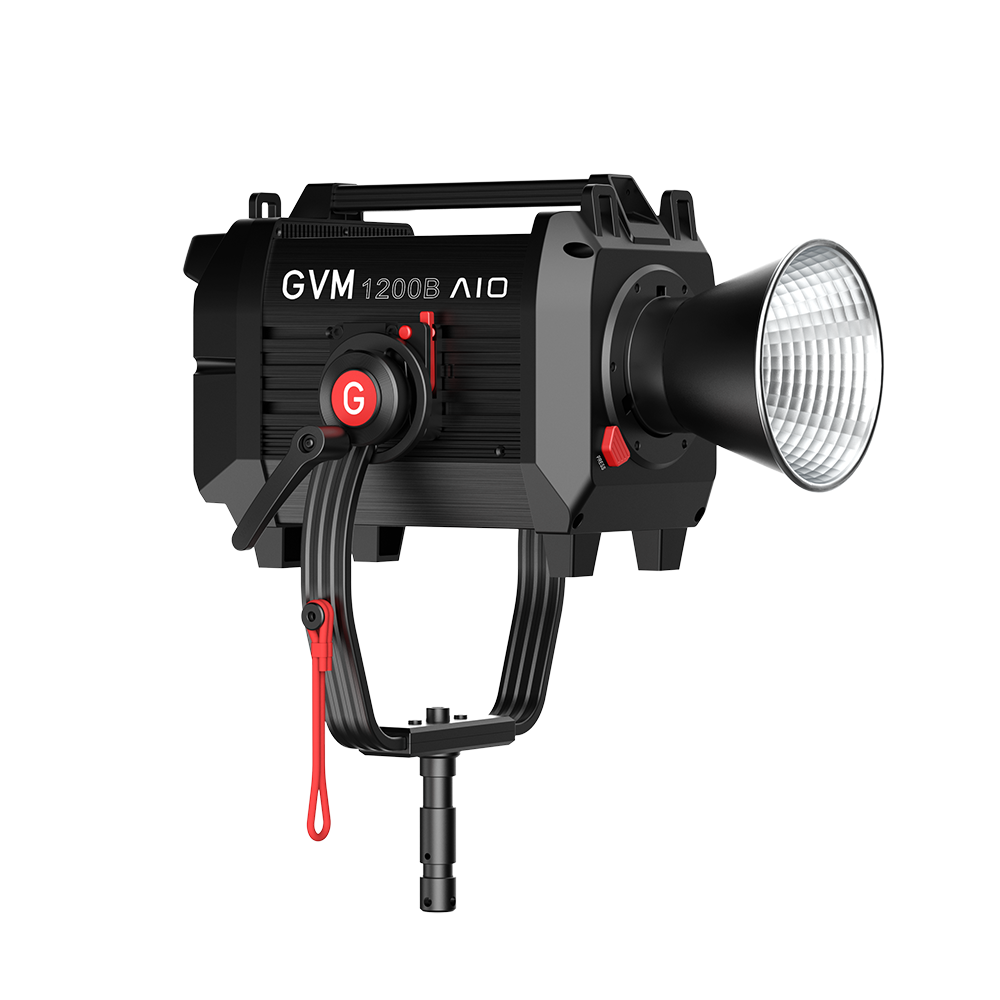Illuminating Your Professional Studio Production Potential
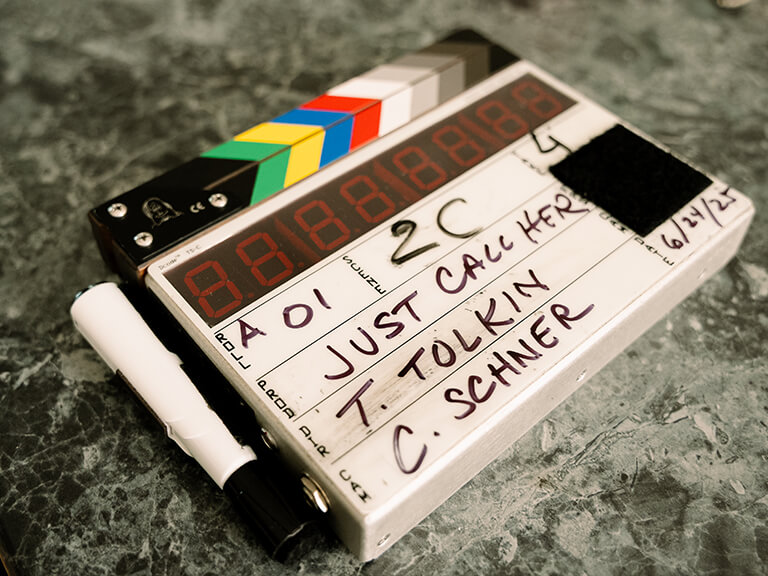
In the dynamic world of filmmaking and video content creation, the power of light transcends mere illumination; it is the silent language of visual storytelling. For any professional venturing into a movie studio, understanding and mastering lighting for video production is not just an asset—it’s a fundamental requirement. This comprehensive guide will illuminate the intricate facets of studio lighting, transforming your potential into professional prowess.
Beyond Basic Illumination: Why Studio Lighting is Both an Art and a Science
At its core, lighting for video production in a studio environment is a profound blend of artistic intuition and scientific precision. It’s where the creative vision meets technical execution.
- Enhancing Visual Storytelling & Cinematic Feel: Light can define mood, evoke emotion, create depth, and direct the viewer’s gaze. Mastering its application allows you to sculpt shadows and highlights, transforming a flat image into a rich, three-dimensional narrative. This deliberate manipulation of light is what imbues your video production with that coveted cinematic feel, elevating it from mere footage to compelling visual art.
- Achieving Precision Control & Consistency: Unlike uncontrolled outdoor environments, a studio offers a unique advantage: complete control. This translates directly into the ability to achieve unparalleled precision and consistency in your lighting for video production. Every shadow, every highlight, every color temperature can be meticulously controlled and replicated, ensuring a cohesive look across scenes, takes, and even separate shooting days.
- Unique Advantages of a Studio Environment: The dedicated studio space provides a controlled canvas. Factors like weather, ambient light changes, and external noise are eliminated, allowing filmmakers to focus solely on their creative and technical vision without external interference.
Target Audience for This Guide: Aspiring Cinematographers, Gaffers, and Serious Filmmakers
This guide is meticulously crafted for individuals deeply committed to the craft of filmmaking and video production. Whether you are an aspiring cinematographer striving to define your visual signature, a dedicated gaffer seeking to refine your execution prowess, or any serious filmmaker committed to producing high-quality content, this resource is for you.
- From Theory to Practice: Professional Application: We aim to bridge the gap between abstract lighting principles and their concrete application in professional scenarios. Each concept is presented with an eye towards practical implementation, ensuring you can confidently translate knowledge into action on set.
- The Goal of This Guide: Empowering Your Lighting Mastery in Professional Settings: Our ultimate objective is to empower you. By delving deep into the nuances of lighting for video production within a professional studio, we equip you with the skills and understanding necessary to command light with confidence, creativity, and precision in any demanding production environment.
Understanding the Movie Studio Environment: Advantages & Challenges
A movie studio is more than just a large room; it’s a specialized facility designed for optimal video production lighting and overall filmmaking efficiency.
The Controlled Canvas: Benefits of a Dedicated Studio Space
The primary allure of a dedicated studio space lies in its unparalleled control.
- Full Control Over Light, Sound, Temperature: Imagine a world where the sun doesn’t set unexpectedly, where street noise never intrudes, and where the climate is always perfect for both crew and equipment. This is the promise of a studio. You command every lumen, every decibel, and every degree, allowing for absolute creative freedom in your lighting for video production.
- Ample Power Supply & Distribution: Professional studios boast robust electrical infrastructure, with ample power supply and sophisticated distribution systems. This is critical for powering the myriad of high-wattage lights, cameras, and other production equipment without fear of overload.
- High Ceilings, Lighting Grids & Truss Systems: The vertical space is a game-changer. High ceilings accommodate tall sets and allow lights to be positioned far from the subject for softer, more natural illumination. Integrated lighting grids and truss systems provide safe and flexible rigging points for hanging heavy fixtures and modifiers, essential for complex lighting for video production setups.
- Soundproofing & Acoustic Treatment: Beyond light, sound is equally crucial. Studios are designed with extensive soundproofing and acoustic treatment to eliminate external noise and control internal reverberation, ensuring pristine audio recording without compromise.
- Types of Stages: Black Box, Green Screen, Cyc Walls, Set Builds: Studios offer diverse environments. A Black Box provides a versatile blank slate. Green Screens and Cyc Walls (cycloramas – seamless curved backdrops, often painted white or green) offer specialized backgrounds for visual effects and infinite horizons. Dedicated areas for Set Builds allow for intricate and immersive environments to be constructed and lit.
Addressing Complexity: Studio-Specific Challenges
While studios offer immense advantages for lighting for video production, they also introduce unique complexities.
- Scale & Budget Considerations: The sheer scale of studio productions often translates to significant budget requirements. Renting a studio, hiring specialized crews, and acquiring extensive lighting packages can quickly add up.
- Heat Management & Ventilation: Powerful lights generate substantial heat. Managing studio temperature and ensuring adequate ventilation becomes critical for crew comfort, equipment longevity, and even talent well-being, especially during long shoots.
- Complex Power Load Calculations & Safety: The sophisticated power systems in studios require expertise. Calculating total power loads for all lighting and other equipment, understanding circuit capacities, and ensuring strict electrical safety protocols are paramount to prevent overloads and accidents.
- Equipment Rentals & Logistics: While studios may provide some basic infrastructure, specialized lighting for video production equipment often needs to be rented. Managing the logistics of transporting, setting up, maintaining, and returning this vast array of gear can be a complex undertaking.
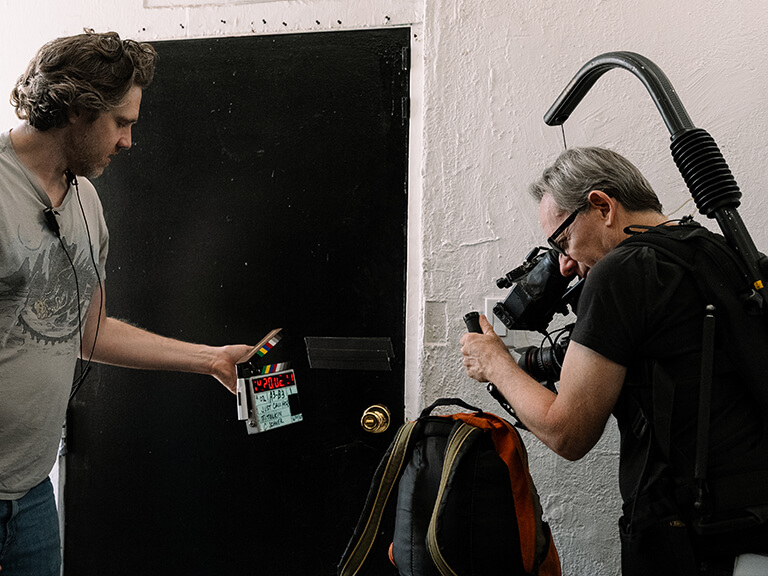
The Professional Lighting Team: Roles, Responsibilities & Collaboration
Achieving cinematic lighting for video production in a studio is a collaborative endeavor, orchestrated by a highly skilled team.
Director of Photography (DP) / Cinematographer: The Visual Visionary
The Director of Photography (DP), also known as the Cinematographer, is the chief of the camera and lighting crews.
- Communicating with Director for Visual Style: The DP works intimately with the director to understand and translate their artistic vision into a cohesive visual style for the film or video.
- Designing the Overall Lighting Scheme: The DP conceptualizes and designs the entire lighting for video production scheme, determining the type, quality, and direction of light needed to achieve the desired look and mood for each scene.
- Directing the Lighting Crew: The DP then communicates their vision and specific lighting instructions to the Gaffer and the rest of the lighting team, guiding them in the execution of the lighting plan.
Gaffer: The Execution Master
The Gaffer is the head of the electrical department and the DP’s right hand when it comes to lighting.
- Translating DP’s Vision into Practical Lighting: The Gaffer’s primary role is to interpret the DP’s artistic vision and translate it into practical, achievable lighting setups. They devise the technical plan for how each light will be rigged, powered, and controlled.
- Managing the Lighting Department Crew: The Gaffer manages all the electricians and lighting technicians, delegating tasks and ensuring that the lighting plan is executed safely and efficiently.
- Responsible for Power, Safety & Equipment: The Gaffer oversees all electrical work on set, including power distribution, ensuring safety protocols are followed rigorously, and managing all lighting equipment.
Best Boy Electric: The Gaffer’s Chief Assistant
The Best Boy Electric is the Gaffer’s key assistant and second-in-command.
- Assisting Gaffer with Gear & Crew Management: They help the Gaffer manage the vast inventory of lighting gear, organize equipment, and assist in supervising the rest of the electrical crew.
- Overseeing Cable Runs & Electrical Safety: A crucial responsibility is overseeing the safe and tidy routing of all power cables, ensuring no trip hazards or electrical risks.
Electrics / Lighting Technicians: The Hands-On Operators
The Electrics are the backbone of the lighting department, responsible for the physical execution of the lighting plan.
- Setting Up, Adjusting & Striking Lights: They are the ones who physically carry, assemble, position, and adjust all the light fixtures according to the Gaffer’s instructions. At the end of the day, they efficiently “strike” (take down) the lights.
- Cabling & Light Modifier Operation: Electrics handle all the necessary power cabling for the lights and operate various light modifiers, attaching and adjusting them to shape the light as required.
Key Grip & Grip Team: Shaping Light & Building Structures
While the electrical department handles the lights themselves, the Grip department specializes in shaping and manipulating light, and providing structural support.
- Manipulating Light Modifiers: Flags, Nets, Reflectors: The Grip team uses tools like flags (solid black fabrics to block light), nets (to reduce light intensity), and reflectors (to bounce or fill light) to precisely control and sculpt the light coming from the fixtures.
- Building Set Structures & Secure Support: They are also responsible for building and securing stands, overhead rigs, and other structures necessary to hold lights, modifiers, and even camera equipment safely.
Essential Professional Lighting Equipment for Movie Studio Video Production
The quality of your lighting for video production is directly tied to the equipment at your disposal. A professional movie studio will have an arsenal of specialized tools.
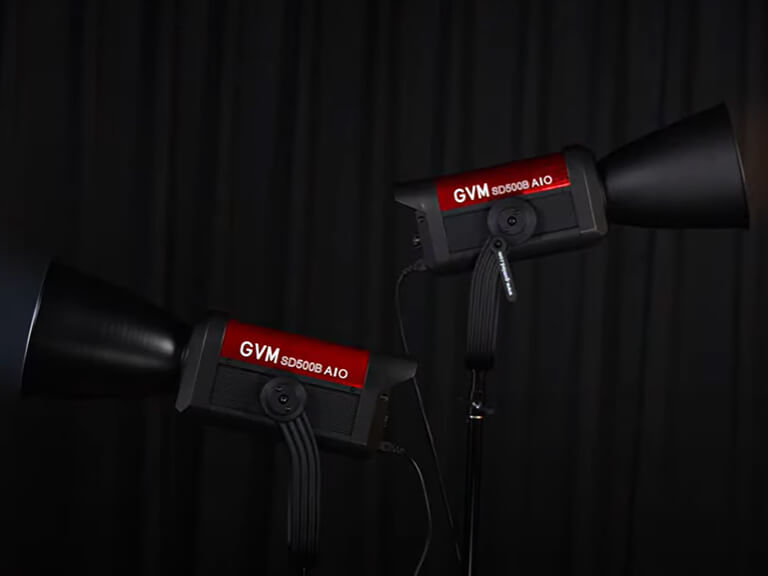
Key Light Sources: Power, Color & Versatility
The heart of any lighting setup is the light fixture itself.
- Fresnels, PARs, Open Face HMIs: These are traditional workhorses. Fresnels offer a focused, controllable beam with soft edges. PARs (Parabolic Aluminized Reflector lights) provide a powerful, often more punchy beam. Open Face HMIs are incredibly bright, often used for broad fill or bouncing.
- HMI Fixtures: These are high-power, daylight-balanced lights that produce intense, efficient light mimicking natural sunlight. Their high Color Rendering Index (CRI) ensures accurate color reproduction, crucial for professional video production lighting.
- LED Fixtures: LED technology has revolutionized the industry. These lights are energy-efficient, often offer bi-color (adjustable color temperature from warm to cool) or full RGBWW (Red, Green, Blue, White, Warm White) capabilities for infinite color choices, and are highly programmable for intricate lighting cues. Large panels, COB (Chip-on-Board) lights, and versatile tube lights (like Astera and Quasar Science) provide diverse solutions.
- Tungsten Lights: These traditional lights produce a warm, yellowish tone and a continuous spectrum, making them a classic choice for a cozy or historic feel. Examples include tungsten Fresnels and open face units.
- Fluorescent Lights (Kino Flo): Known for their soft, efficient, and low-heat output, Kino Flo-style fluorescent lights are excellent for broad, even fill light, especially in small spaces or for interviews.
Light Modifiers & Control Accessories: Precise Light Shaping
Light fixtures only provide the raw light; modifiers sculpt it into the desired form for optimal lighting for video production.
- Large Softboxes & Octaboxes: These create a vast, soft light source, ideal for flattering portraits or even illumination of larger subjects.
- Lanterns (Chinese Balls/Soft Lights): These spherical diffusers provide a wonderfully omni-directional, uniform soft light, excellent for general ambient fill or a practical on set.
- Silks & Diffusion Fabrics: Ranging from light to heavy, these materials are placed between the light source and the subject to soften and diffuse the light, reducing harsh shadows.
- Flags, Cutters & Solids: These opaque black fabrics or boards are essential for blocking light entirely, cutting off unwanted spill, or shaping precise shadows.
- Scrims (Single, Double): Made of mesh material, scrims reduce light intensity without altering its quality, similar to sunglasses for your light.
- Gels (Color Correction & Effects): Thin sheets of colored plastic, gels are used to adjust the color temperature of lights (e.g., to match daylight to tungsten) or to create specific artistic color effects.
- Reflectors (Bounce Boards): These reflective surfaces (white, silver, gold) are used to bounce light back onto the subject, filling shadows or adding specular highlights.
- Grids & Honeycomb Grids: Attached to softboxes or reflectors, these accessories control light spill, allowing the light beam to be more focused and directional.
Stands, Clamps & Rigging: Safe & Flexible Positioning
Secure and flexible positioning of lights is paramount for creative lighting for video production.
- C-Stands, Combo Stands, Crank Stands: These robust stands support lights at various loads and heights. C-stands are versatile for holding lights or modifiers, while combo stands offer more height and stability, and crank stands handle very heavy fixtures with ease.
- Overhead Frames & Diffusion Fabrics: Large frames (often 6×6, 8×8, 12×12, or 20×20 feet) are rigged overhead to hold large diffusion fabrics for giant soft light sources or large black flags to absorb light.
- Sandbags & Shot Bags: Essential safety items, these weighted bags are placed on the legs of stands to prevent tipping, especially when supporting heavy lights or modifiers.
- Clamps (Super Clamps, Cardellini Clamps), Magic Arms: These versatile tools allow lights and accessories to be mounted securely onto pipes, stands, or set pieces in creative and otherwise impossible positions.
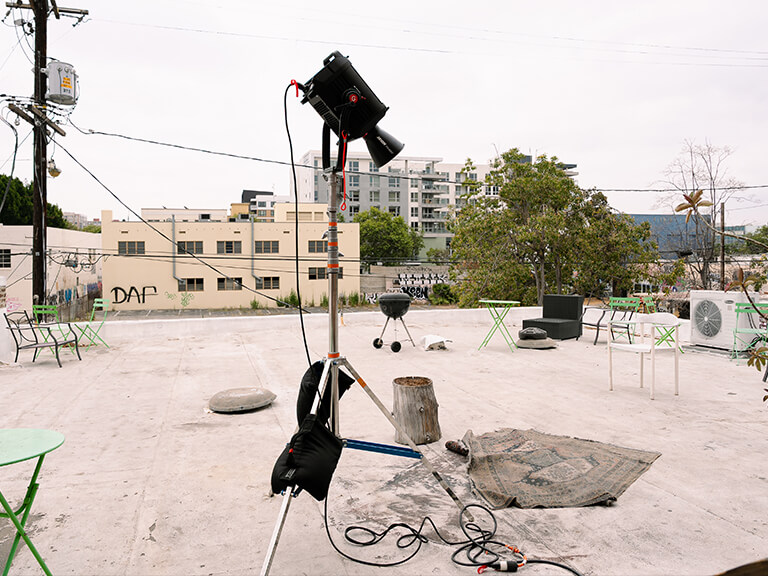
Power Distribution & Dimming Systems: The Core of Studio Power
The intricate dance of lighting for video production in a studio is powered by a robust and safely managed electrical system.
- Distribution Boxes & Cable Runs: These are the arteries of the studio, safely channeling power from the main grid to individual lighting fixtures through heavy-duty cables. Proper cable management prevents hazards.
- DMX Lighting Control System: This digital protocol is the brain of modern studio lighting. It allows for precise and simultaneous control of multiple light parameters (intensity, color, effects) from a central console, enabling complex lighting cues and dynamic changes.
- Dimmers & Ballasts: Dimmers adjust the brightness of lights (especially tungsten and LED), while ballasts are crucial components for HMIs and fluorescents, regulating power flow and preventing flicker.
- Load Meters & Circuit Breakers: These are vital safety components. Load meters monitor the amount of power being drawn, ensuring circuits are not overloaded, while circuit breakers automatically cut power if an overload or fault occurs, protecting equipment and personnel.
In this intricate dance of professional lighting, where precise collaboration is key, having the right tools is paramount for achieving the ideal light for video recording. The GVM SD1200B AIO 1200W Bi-Color Integrated Spotlight is precisely engineered for this environment. Its innovative all-in-one design drastically streamlines setup, allowing Gaffers and Electrics to focus more on the nuanced placement and shaping of light. Meanwhile, its powerful 1200W bi-color output and exceptional color accuracy empower the Director of Photography, providing the versatility and precision needed to translate their cinematic vision into stunning reality with every shot.
Advanced Lighting Principles & Techniques in a Studio Environment
Beyond the gear, mastering the art of lighting for video production requires a deep understanding of advanced principles.
Expanded Three-Point Lighting System (Beyond the Basics)
While the fundamental Key Light, Fill Light, and Backlight form the bedrock, a truly cinematic look often requires an expanded approach.
- Refined Use of Key, Fill, Backlight: The subtle nuances of angle, intensity, and quality for each of these primary lights are endlessly refined.
- Adding Accent Lights, Eye Lights, Kicker Lights: These supplementary lights add sparkle (eye lights), highlight specific details (accent lights), or create a glowing rim around the subject (kicker lights/rim lights), adding separation and dimension.
- Background & Foreground Lighting: Creating Depth & Layers: Deliberate lighting of elements in the background and foreground helps to create a sense of depth, separating the subject from its environment and adding visual layers to the frame.
Mastering Light Quality: Hard Light vs. Soft Light, Specular vs. Diffused Light
The perceived “feel” of your lighting for video production hinges on understanding light quality.
- Shaping Light with Large Modifiers: The choice and placement of large softboxes, silks, and diffusers are critical in transforming harsh, hard light into soft, flattering illumination.
- Creating Dramatic Contrast & Smooth Transitions: Hard light produces sharp, defined shadows, perfect for dramatic contrast. Soft light yields gentle, gradual transitions between light and shadow, creating a more ethereal or elegant feel. Mastering both allows for versatile storytelling.
Color Temperature & Color Science: Achieving Cinematic Harmony
Color is a powerful emotional tool in video production lighting.
- Challenges & Solutions for Mixed Light Sources: Studios often use a mix of tungsten (warm), HMI (daylight), and LED (variable) lights. Mastering color science involves understanding how to match or intentionally mismatch these sources for a desired effect, often using gels.
- Precise Gel Usage: Correction & Artistic Effect: Gels aren’t just for color correction; they’re artistic tools to add specific hues, create mood, or simulate practical lighting sources.
- Understanding CRI, TLCI, SSI: For Fixture Selection: These metrics (Color Rendering Index, Television Lighting Consistency Index, Spectral Similarity Index) are crucial for selecting lights that accurately render colors and skin tones.
- Role of LUTs & Color Management in Post-Production: Look-Up Tables (LUTs) and effective color management workflows in post-production ensure that the colors captured on set are preserved and enhanced to achieve the final desired look.
Motivated Lighting: Telling Stories with Light
Motivated lighting is a key principle in cinematic lighting for video production – light that appears to have a logical source within the scene.
- How Light Suggests Source (Windows, Practicals, Fire, etc.): Even if a light is artificial, it should ideally appear to emanate from a believable source within the narrative, like light streaming through a window, from a table lamp (practical), or the glow of a campfire.
- Integrating Natural & Artificial Light: Often, studio scenes will attempt to mimic natural light, blending powerful artificial daylight-balanced lights with subtle practicals to create a convincing and evocative atmosphere.
Shaping Light Through Subtraction: The Power of Negative Fill & Flags
Lighting for video production isn’t just about adding light; it’s equally about controlling its absence.
- More Than Adding Light: Creating Contrast by Absorbing Light: Negative fill involves using black flags or materials to absorb light, intensifying shadows and creating a sense of depth and drama by removing light from specific areas.
- Fine Control of Spill & Shadows: Flags and cutters are invaluable for precisely controlling light spill (unwanted light hitting areas), shaping the edges of light, and creating crisp, defined shadows, which are essential for visual interest and dimension.
Utilizing Cyc Walls & Green/Blue Screens
Specialized backgrounds in studios require specialized lighting for video production techniques.
- Evenly Lighting Seamless Backdrops: For cyc walls, the challenge is to evenly light the curved, seamless background to create a uniform, shadowless effect that appears to extend infinitely.
- Green/Blue Screen Key: Flat, Shadowless, Spill Elimination: For chroma key compositing, green or blue screens must be lit perfectly flat and shadowless. Crucially, lighting must also prevent “spill”—the colored light reflecting onto the subject—to ensure a clean key in post-production.
Strategic Lighting Setups for Diverse Studio Scenarios
The versatility of a movie studio allows for strategic lighting for video production setups tailored to various content types.
Interview & On-Camera Video Lighting: Professional Polish
For interviews, podcasts, or direct-to-camera presentations, the goal is clarity and professionalism.
- Multi-Camera Lighting Considerations: When using multiple cameras, lighting must be consistent and flattering from all angles.
- Eye Light & Soft Transition Techniques: A well-placed eye light adds sparkle to the subject’s eyes, making them appear more alive. Soft, even lighting with gentle transitions ensures a pleasing and approachable look.
Dramatic Scene Lighting: Mood, Atmosphere & Narrative
Dramatic scenes use light as a primary narrative tool.
- High Contrast & Low-Key Lighting: Often, dramatic scenes employ high contrast with deep shadows (low-key lighting) to create tension, mystery, or somber moods.
- Using Shadows for Storytelling: Shadows are not just absences of light; they are compositional elements that can obscure, reveal, and symbolize, adding layers to the narrative.
- Simulating Specific Times or Locations: Lighting for video production can transport the audience, simulating the harsh light of midday, the soft glow of dusk, or the artificial hum of a specific industrial setting.
Product & Commercial Lighting: Precision & Detail
Commercials and product showcases demand meticulous lighting for video production that highlights every detail.
- Highlighting Texture & Material: Light is manipulated to bring out the subtle textures of fabrics, the sheen of metal, or the grain of wood, making products visually appealing.
- Creating Specular Highlights & Reflections: Precise placement of hard lights can create dazzling specular highlights and controlled reflections that emphasize a product’s form and finish.
- Shadowless Shooting & Special Effects: For certain products, a shadowless look (achieved with large diffusion and careful fill) is desired, while complex multi-light setups can create special effects or reveal intricate details.
Music Video & Performance Lighting: Dynamic & Effect-Driven
Music videos and live performances often utilize lighting for video production as an active participant in the visual spectacle.
- Synchronizing Lights with Music Rhythm: Lights can be programmed to change intensity, color, and movement in sync with the music’s beat and tempo, adding kinetic energy.
- Dynamic Changes via DMX Programming: Advanced DMX control allows for complex, pre-programmed light cues that shift with the performance, creating visually stunning sequences.
- Smoke, Haze & Special Effect Lighting: Incorporating atmospheric elements like smoke or haze makes light beams visible, creating dramatic shafts of light and enhancing the overall spectacle.
Chroma Key Compositing (Advanced Green Screen Workflow)
Precise lighting for video production is absolutely critical for effective chroma keying.
- Precise Lighting for Optimal Keying: The green or blue screen must be lit perfectly evenly, without hot spots or shadows, to allow for a clean “key” (removal) in post-production.
- Matching Foreground & Background Lighting: The subject must be lit in a way that matches the lighting of the intended background plate, ensuring a seamless and believable composite. This includes matching direction, quality, and color temperature.
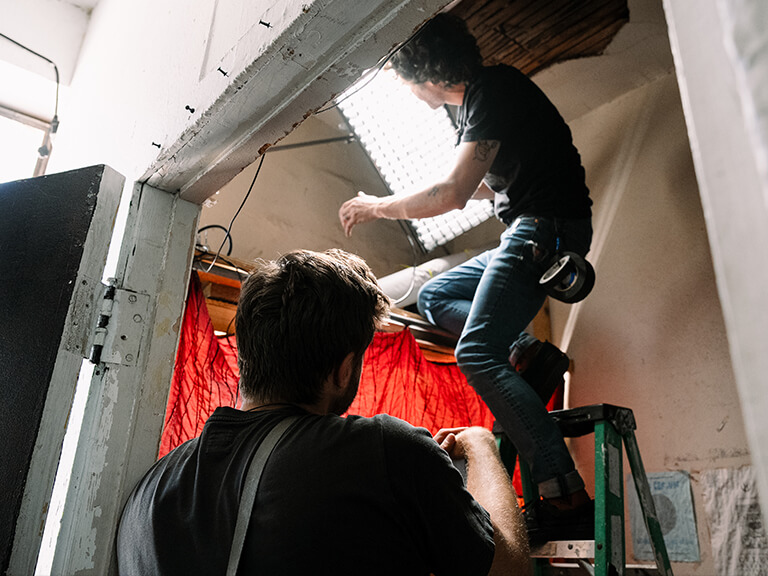
Lighting for Small Spaces in Studio Video Production: Thinking Small in a Big Environment
Even in the vast expanse of a movie studio, filmmakers often face the challenge of lighting for video production in surprisingly cramped quarters.
The Paradox: Lighting Small Spaces Within Large Studios
- Why Small Space Challenges Still Arise in Studios: It seems counterintuitive, but large studios frequently house intricate set builds that include tight corridors, compact rooms, or even vehicle interiors that mimic confined spaces.
- Tight Areas within Set Builds: These constructed sets can have extremely limited room for light placement and manipulation.
- Limitations from Specific Props or Angle Demands: A large prop, a specific camera angle, or the need to shoot within a real car can create unforeseen spatial constraints.
Adapting Studio Principles & Equipment for Tight Spaces
Addressing these challenges requires adapting traditional studio lighting for video production principles and leveraging specialized compact equipment.
- e.g., Mini COB Lights, LED Tubes, Flexible LEDs: Small, high-powered LED fixtures are invaluable here. Mini COB (Chip-on-Board) lights pack a punch in a tiny form factor. LED tubes and flexible LED mats can be squeezed into narrow gaps or even taped directly to surfaces.
- Advantages of Small, High-Powered LED Fixtures: Their compact size, high output, low heat emission, and often battery operation make them perfect for hard-to-reach or confined areas.
- Compact Light Modifiers:
- Small Softboxes, Mini Reflectors, Custom Flags: Traditional modifiers are scaled down or custom-made to fit. Small softboxes offer soft light in tight spaces. Mini reflectors can bounce subtle fill. Custom-cut flags block spill precisely.
- Flexible Mounting Solutions:
- Magic Arms, Small Clamps, Wall Mounts: These allow lights to be rigged in unusual places, clamped to door frames, shelves, or even directly mounted to set walls to achieve precise illumination in confined areas.
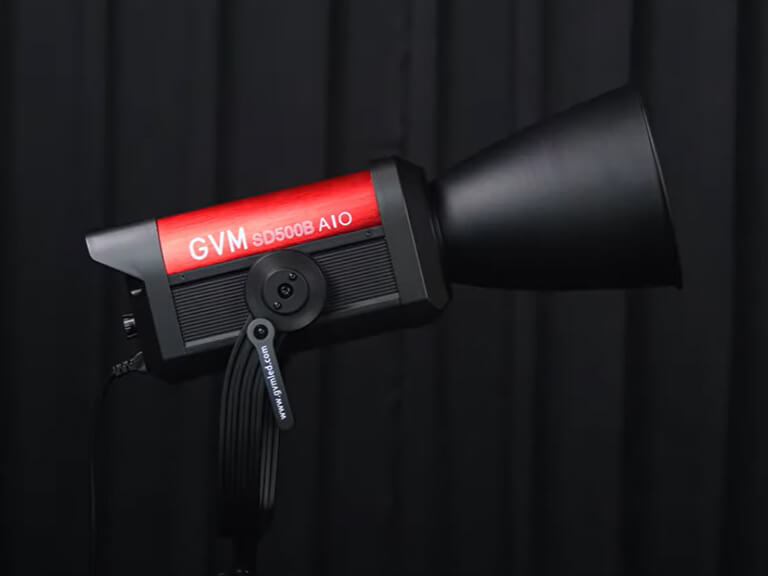
Overcoming Specific Small Space Obstacles (Even in a Studio)
- Using Negative Fill to Create Depth Illusion: In small spaces, light tends to bounce everywhere. Using negative fill to absorb light and create pockets of shadow can actually create a sense of depth and dimension where none physically exists.
- Adding Layers with Foreground Elements: Placing elements in the immediate foreground, even if slightly out of focus, can also enhance the illusion of depth in a limited space.
- Limited Distance & Depth of Field Issues: In tight quarters, achieving desired depth of field can be challenging due to limited camera-to-subject distance. Lighting can help compensate by guiding the eye.
- Controlling Reflections & Glare:
- Precise Flagging and Control: In small, reflective environments (like a car interior), every light source is prone to causing unwanted reflections or glare. Meticulous flagging and precise light control are essential.
- Preventing Excessive Light Bounce in Tight Spaces: White walls or close surfaces can cause light to “bounce” excessively, flattening the image. Using negative fill or dulling spray can mitigate this.
- Heat & Ventilation Management:
- Extra Consideration for Heat Build-up from Lights in Small Spaces: Even low-heat LEDs can make a small, enclosed space uncomfortable or even unsafe if ventilation is poor. Monitoring heat is crucial.
Case Studies: Successful “Thinking Small in Big” Studio Lighting
- Car Interior Shots: Recreating realistic car interiors, often on a soundstage, requires placing lights strategically inside and outside the vehicle to mimic natural light through windows or practical car lights.
- Wardrobe, Phone Booth, or Specific Small Sets: Sets designed to be inherently small, like a cramped apartment bathroom, a phone booth, or a walk-in wardrobe, present ideal challenges for creative compact lighting for video production.
- Precision Lighting for Macro/Close-up Shots: When dealing with extreme close-ups or macro shots, the lighting area is incredibly tiny, demanding highly precise, often miniature, light sources and modifiers.
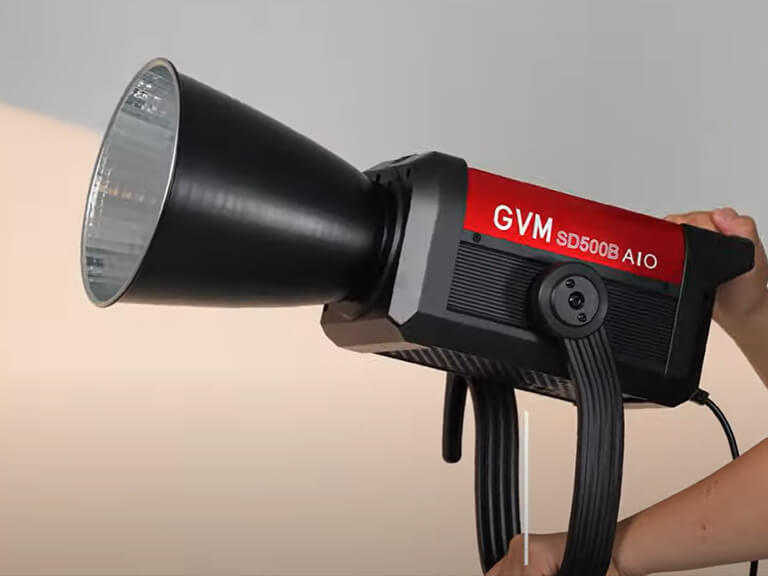
Pre-Production, Planning & Key Safety Protocols in the Studio
The success of any lighting for video production in a studio begins long before the first light is turned on, emphasizing thorough pre-production and unwavering commitment to safety.
Lighting Design & Pre-visualization: From Concept to Reality
- Storyboarding & Lighting Diagrams: Visualizing the scene is paramount. Storyboards illustrate key shots, while detailed lighting diagrams (often called “lighting plots”) map out the placement, type, and direction of every light fixture.
- Lighting Tests & Camera Tests: Crucial for confirming the look. Conducting specific lighting tests with the actual talent and wardrobe, along with camera tests (checking exposure, color, and lens characteristics), ensures the desired aesthetic is achievable.
- Collaboration with DP, Director, & Art Department: Effective lighting is a team sport. Close collaboration between the DP, director, and the art department (set designers, prop masters) ensures that the lighting plan complements the set design and narrative vision.
Power Management & Load Calculation: Preventing Disasters
Electrical safety is paramount in studio video production lighting.
- Understanding Amps, Volts, Watts: A foundational understanding of these electrical units is essential for safe operation.
- Calculating Total Load & Circuit Capacity: Before plugging in any light, the Gaffer must accurately calculate the total power consumption of all equipment and ensure it does not exceed the capacity of the available circuits and generators.
- Safe Connections & Breaker Usage: All electrical connections must be secure, properly grounded, and managed with appropriate circuit breakers to prevent overloads and electrical fires.
Essential Studio Safety Practices: Protecting Personnel & Equipment
- Cable Management & Floor Laying: Loose cables are a major trip hazard. All cables must be neatly taped down or run overhead using cable ramps, especially in high-traffic areas.
- Fixture Securing & Aerial Work Safety: Lights rigged overhead or on stands must be securely fastened with safety chains or wires. Any work at height (on ladders, lifts, or grids) requires strict adherence to aerial work safety protocols.
- Heat Warnings & Fire Prevention: Powerful lights generate heat. Hot surfaces must be clearly marked. Flammable materials should be kept away from lights, and fire extinguishers must be readily accessible.
- Emergency Procedures & First Aid Readiness: All crew members should be aware of emergency exits, fire escape routes, and basic first aid procedures.
Team Briefing & Communication: Ensuring Smooth Production
- Clear Task Assignment & Responsibilities: Every team member should know their role and specific tasks related to the lighting setup and operation.
- Maintaining Clear Radio Communication: For large studio productions, clear and concise radio communication between departments (especially between DP, Gaffer, Grips, and Camera operators) is vital for efficient and safe workflow.
On-Set Troubleshooting & Problem Solving in the Studio
Even with meticulous planning, issues can arise on set. Being adept at troubleshooting is key to maintaining momentum in lighting for video production.
Solving Common Lighting Issues:
- HMI Flicker Issues: HMIs can flicker if not properly ballasted or if the camera’s shutter speed doesn’t align with the light’s frequency. Solutions involve adjusting the ballast, shutter, or using flicker-free modes.
- Unwanted Reflections & Glare: Shiny surfaces or lenses can pick up unwanted reflections of lights. Solutions include repositioning lights, using flags, polarizing filters, or dulling spray on reflective surfaces.
- Power Outages or Tripped Breakers: Often due to circuit overload. The solution involves identifying the overloaded circuit, redistributing power, or bringing in more power.
- Color Shifts & Inconsistency: Lights can drift in color temperature over time, or mixed light sources can create color casts. Recalibrating, gelling, or adjusting white balance are common fixes.
- Excessive Heat & Overheating Equipment: Lights can overheat, leading to shutdown or damage. Solutions include increasing ventilation, using less powerful fixtures, or providing fans.
Quick Fixes & On-the-Fly Adjustments:
- Utilizing Available Resources for Solutions: A good Gaffer and lighting team are resourceful, often finding creative solutions with the equipment at hand. A bounce card can become a flag, a diffusion frame can be used as a reflector.
- The Art of Quick Adjustments & Compromises: Sometimes, the ideal solution isn’t feasible due to time or space. The ability to make quick, effective adjustments and find acceptable compromises without sacrificing core quality is a hallmark of a professional lighting crew.
Conclusion: The Art of Light in the Professional Studio
Key Takeaways for Studio Lighting Mastery:
Mastering lighting for video production in a professional studio is a journey that integrates deep technical knowledge with profound artistic sensibility. It demands not only an understanding of equipment and principles but also a keen eye for aesthetics and storytelling. The process unequivocally underscores the critical importance of teamwork and crystal-clear communication among all crew members. Above all, safety must always be the paramount concern, with absolutely no compromises.
The Journey to Becoming a Studio Lighting Master:
The path to true studio lighting mastery is continuous. It requires unwavering dedication to continuous learning and diligent practice. Every production offers new lessons and challenges to hone your skills. As you progress, remember to diligently build your professional portfolio, showcasing your diverse lighting for video production work, your problem-solving abilities, and your artistic vision.
Call to Action:
We invite you to join the conversation and share your valuable studio lighting for video production experiences, tips, or challenges in the comments section below. Your insights contribute to our collective knowledge! For more in-depth professional filmmaking tips, advanced techniques, and equipment reviews related to lighting for video production, be sure to subscribe to our channel/newsletter and stay illuminated on your creative journey!


